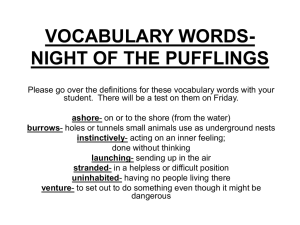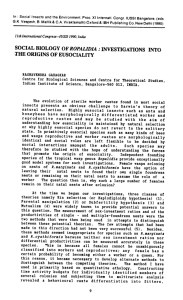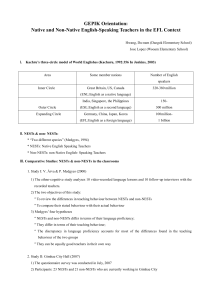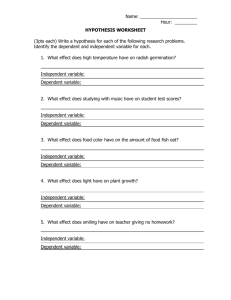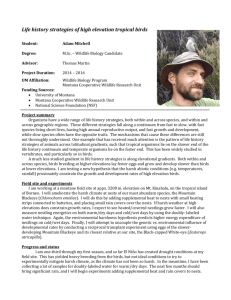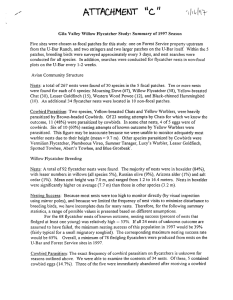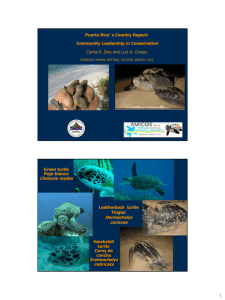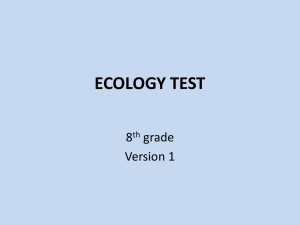spain
advertisement
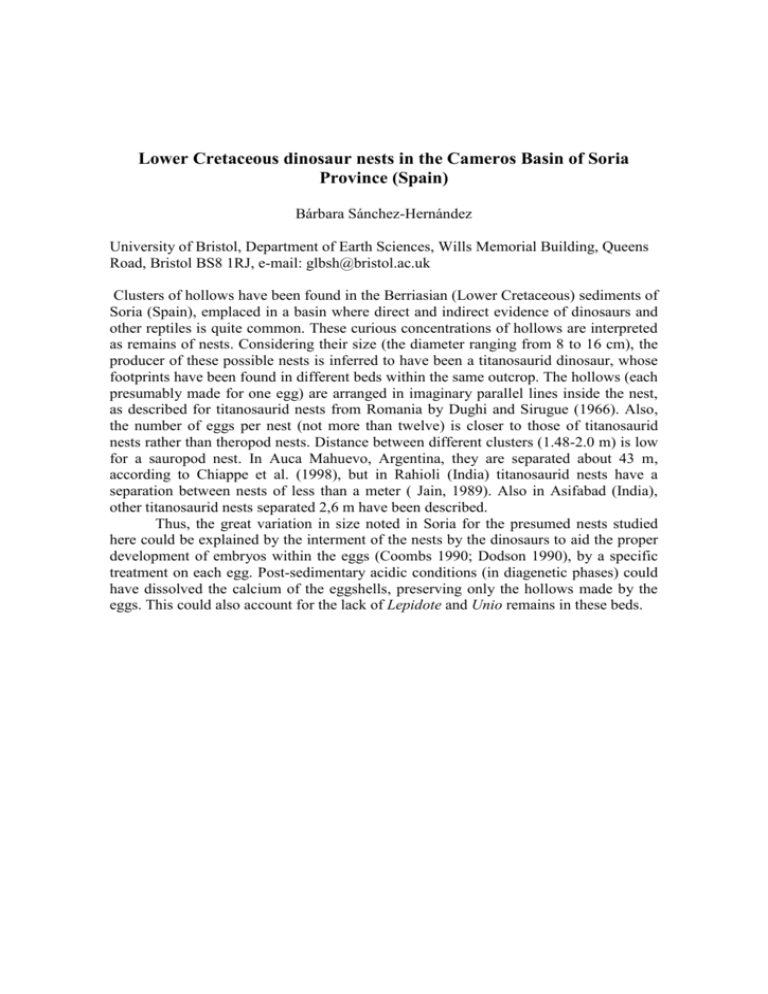
Lower Cretaceous dinosaur nests in the Cameros Basin of Soria Province (Spain) Bárbara Sánchez-Hernández University of Bristol, Department of Earth Sciences, Wills Memorial Building, Queens Road, Bristol BS8 1RJ, e-mail: glbsh@bristol.ac.uk Clusters of hollows have been found in the Berriasian (Lower Cretaceous) sediments of Soria (Spain), emplaced in a basin where direct and indirect evidence of dinosaurs and other reptiles is quite common. These curious concentrations of hollows are interpreted as remains of nests. Considering their size (the diameter ranging from 8 to 16 cm), the producer of these possible nests is inferred to have been a titanosaurid dinosaur, whose footprints have been found in different beds within the same outcrop. The hollows (each presumably made for one egg) are arranged in imaginary parallel lines inside the nest, as described for titanosaurid nests from Romania by Dughi and Sirugue (1966). Also, the number of eggs per nest (not more than twelve) is closer to those of titanosaurid nests rather than theropod nests. Distance between different clusters (1.48-2.0 m) is low for a sauropod nest. In Auca Mahuevo, Argentina, they are separated about 43 m, according to Chiappe et al. (1998), but in Rahioli (India) titanosaurid nests have a separation between nests of less than a meter ( Jain, 1989). Also in Asifabad (India), other titanosaurid nests separated 2,6 m have been described. Thus, the great variation in size noted in Soria for the presumed nests studied here could be explained by the interment of the nests by the dinosaurs to aid the proper development of embryos within the eggs (Coombs 1990; Dodson 1990), by a specific treatment on each egg. Post-sedimentary acidic conditions (in diagenetic phases) could have dissolved the calcium of the eggshells, preserving only the hollows made by the eggs. This could also account for the lack of Lepidote and Unio remains in these beds. Figure 1- Detail of one of the possible dinosaur nests from the Valdelavilla outcrop (Soria province, Spain) Figure 2- Theropod and sauropod footprints from Los Campos outcrop (Soria province, Spain) Figure 3- Turtle and pterosaur footprints from the Los Tolmos outcrop (Soria province, Spain).

